Can Mikaela Mayer’s rivalry with Queen Underwood help take women’s boxing to the next level?
In 2013, women’s boxing looked poised to make its first jump back onto a big stage since Laila Ali was blowing out no hopers at the beginning of the century.
Former junior featherweight titlist Ana Julaton had done the groundwork, reportedly earning the backing of American premium cable network Showtime as well as Golden Boy Promotions and Floyd Mayweather’s Mayweather Promotions.
When Julaton was unable to stave off spoiler Celina Salazar in a tune-up fight in Cancun, those reported workings fell to the floor, leaving women’s boxing maybe worse off than it was just a year earlier.
Julaton had a couple things right as she made strides to get her sport recognized. Prior to her bout with Salazar, she told me in Las Vegas that it would take more than one strong female to get women’s boxing back on the map. It would take a couple of skilled and marketable women around the same weight class willing to fight each other in order for there to be a break.
For any fringe sport to gain more popularity, there needs to be a rivalry that fans can get emotionally attached to. If you asked UFC breakthrough female star Ronda Rousey, I’m sure she would tell you she needed Miesha Tate at least just a bit to get to her current spot.
Unfortunately, by the time Julaton had made these connections, her in-ring career was on the downside. But there exists another rivalry that has been brewing the past few years that, with the right amount of promotion and luck, could turn the tide on women’s boxing in the years to come.
That rivalry in question is the one between top amateurs Mikaela Mayer and Queen Underwood. The two are set to meet for the third time this evening, yet again in a national PAL finals, this time in Spokane, Wash. Underwood edged Mayer in a bout that sent her to the 2012 Olympics in London. At the national PALs in Oxnard late last year, Mayer turned the tables and edged Underwood in the finals. That bout was regarded by many ringside observers as the best of the tournament.
Mayer’s National PALs finals against Underwood from last year
“It took a year and a half to get that rematch but I think it came at the perfect time,” said Mayer after beating Underwood in Oxnard.
“I have had some great training camps with Coach Al in the last year and some great competition since last year’s Trials so I knew I was ready, and felt confident.”
Mayer told Behind The Gloves last night that she is well prepared for her third crucial meeting with Underwood this evening.
“I respect Queen very much as a fighter, she has accomplished a lot,” said Mayer. “However, I’ve had a very good camp and I am very confident in my training. I definitely plan on doing everything I can to take the win tomorrow. This championship means a lot to me and I have been training long and hard to win it.”
Women’s boxing has changed dramatically over the past two decades, since it first received mainstream attention with the rivalry between Mia St. John and Christy Martin. Though women’s boxing is appreciated in Europe, South America, as well as Mexico, it fell to pieces in the States after Laila Ali avoided formidable opponents, banking on her name recognition to rack up solid purses.
Women’s boxing became a taboo when Ali hung up the gloves. Ali’s mismatches against unskilled opponents on ESPN2 televised cards turned a lot of people off to the sport for good. It’s gotten to a point that there are very few outlets that cover the sport closely.
The thought of many is that women’s boxing is mostly comprised of glorified toughwoman contests. Had you followed the sport simply by watching the fights that were televised nationally over the past twenty years, you wouldn’t be far off base. But in the last ten years, the sport has made big strides in improving the level of competition, thanks in large part to the amateur system.
New Mexico’s Holly Holm is arguably the best active professional female boxer alive these days. That she has switched to mixed martial arts in recent years tells you all you need to know about the state of women’s boxing in the States these days. Holm could make a way bigger splash if she could evolve into a formidable opponent for UFC’s Rousey in the coming months in years than she ever did fighting in her home state of New Mexico.
With Holm out of the picture, the truth is that it is possible that the best female boxer these days is still an amateur. If it isn’t Mayer or Underwood, it could be 18-year old Claressa Shields.
After speaking with Mayer days before Floyd Mayweather’s dominant performance of Saul Alvarez in Las Vegas last September, it is my thought that if anyone can take women’s boxing to that next level, it’s a combination of Mayer and the development of opponents for her when she eventually makes her move to the pros.
Mayer, 23, of Los Angeles, has the head on her shoulders to go with a fan-friendly style that could make her the right person to move things forward. She’s also got great skills and is always improving under the tutelage of Al Mitchell, who is maybe the best amateur coach in the States.
Her goal at the moment is to obviously land a gold medal for the United States at the 2016 Olympic Games in Rio. With a national Dr. Pepper commercial already under her belt, Mayer would be near the top of the list of athletes that could earn a number of big name endorsements the way that 2012 Olympic darling Marlen Esparza did.
Esparza earned the support of McDonalds, Cover Girl, as well as others, but ultimately fell short in earning a bronze medal. Esparza, of Texas, jumped the gun a bit in announcing her retiring from boxing following the games, but has usurped herself back into the system. She picked up where she left off as far as dominating opposition in the amateur system and would do well if she decided to turn pro.
The question is, why would a Mayer or Esparza turn pro at this stage? There might be more money in staying amateur if you’re skilled enough to get to the Olympics.
“Pro or amateur, the only way right now to really make money is to be involved in sponsorships,” said Mayer.
“There’s not a huge market for women in the pros, you’re not making tons of money being a professional fighter. That’s not really the reason why I’m amateur, I’m amateur because I love being amateur. I travel the world, I compete all the time, and my dream is to win a gold medal. When I accomplish that, maybe I’ll go into the pros.”
Though Shields was the only American to win a gold medal in the 2012 Olympics, she didn’t receive the same kind of exposure as an Esparza. This despite the fact that Shields was arguably one of the best stories of the entire 2012 Games, given that she won her gold medal at the tender age of 17.
“It’s really kind of shocking,” said Mayer about Shields’ Olympic conquest.
“She came out of nowhere. All of a sudden there’s this girl from Flint kicking everyone’s ass. She comes in, wins the last Trials, and somebody like Marlen [Esparza], who had a whole team setup a year before the Trials even took place. So when she made the Olympic team, things started rolling in. She already had the business side built up around her. And I think that’s what sucked about Claressa being so young and coming out of nowhere. She didn’t really have time to build her people around her so that when she won that medal, she could bring in the endorsements.”
Mayer realizes that to achieve the level of success she’s after, it’s going to take a good balance of skill and marketability to help move the needle for some people on their thoughts on women’s boxing.
“You can be great at any sport, but the business aspect is just as important,” said Mayer.
“You can be a good boxer but if you don’t have the business mindset to back it up, you’re not gonna go anywhere. And vice versa, if you don’t have the skills to back it up, you’re not gonna go anywhere also, especially in boxing.”
For as marketable as Mayer is, she’s just as good if not better as a fighter. She’s developed since those early defeats to Underwood, as evidenced by her reversing those losses late last year. If there’s anyone that could tab who has the potential to take things to the next level, it’d have to be Mia St. John, who coincidentally knows Mayer very well.
“We’ve sparred for years,” said St. John a day before Mayweather-Canelo.
“I put her in my workout DVDs because I made the production company hire her. I said you’ve got to see this girl, she’s so fit, she’s so beautiful. I think she is a great technical fighter, she has power, she’s fast, and she’s obviously young. I just love her style.”
“The boxing, she’s got down. She also knows the way to get exposure is through marketing and publicity. She doesn’t need any help.”
Some of today’s American professional female champions have done little to improve their standing with the mainstream, thinking it is enough to dominate their opposition and that major television is just going to beg for them to fight on their network. A bit of a rivalry and jealousy developed between some of the pros and amateurs, most notably between Esparza and pound-for-pound pro Ava Knight on Twitter.
Esparza made a statement that Knight as well as friend and former in-ring rival Kaliesha West took offense to, though the comments could have been taken out of context. The back-and-forth was entertaining at first, but as it played out, it read as though the pro women were just upset at the exposure Esparza was getting.
“There is a little rivalry between the women in the pros and in the amateurs,” said Mayer.
“I think they may have taken Marlen’s statement a little out of context. I think the best female fighters around the world are amateur. There are some great women in the pros, but I think the competition in the amateur is a lot stiffer than what people think.”
It’s hard not to feel for skilled pros like Knight, who would have benefited greatly, had the Olympics been available to female boxers back when she was still early in her career.
“If I had turned pro six years ago and the Olympics came out, I’d be upset,” Mayer reasoned.
“They didn’t know that was going to happen, they didn’t have a chance. I feel like, when they turned pro, that was really the only option. The amateurs weren’t built up the way they are now. If you wanted to fight, you kind of had to turn pro.”
Later this evening, Mayer will tangle with Underwood yet again. If Mayer can beat out Underwood in the race for that much desired Olympic spot, it’s the kind of storyline that could earn more than a casual interest should it develop into the pros. For that to happen, it would take a bit of luck as well as the foresight of an American promoter and cable network to get behind the idea.
“It’s going to take fans to be interested, and fans to pay to see the females fight,” said St. John. “How do you get them interested, I don’t know? Women’s basketball, the WNBA, is still trying to figure that out.”
People pay to see the women fight, just not in America these days. Mariana Juarez has headlined numerous cards in Mexico, even one that had a Hall of Fame name in Rafael Marquez on her undercard. Granted, Juarez also appeared in the Mexican edition of Playboy. St. John coincidentally did Playboy during her prime as a fighter, but the girls that are aiming to change things in the future are hoping to garner a different kind of attention.
Though one might brush the thought of women’s boxing as a marketable endeavor in the States, ask yourself this: how many American male professional fighters have anything as major as a Dr. Pepper endorsement?
-Mark E. Ortega / @MarkEOrtega
-Managing editor at www.BehindTheGloves.com


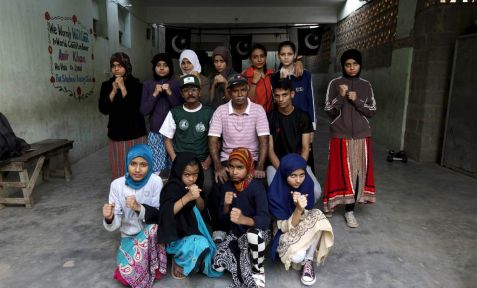
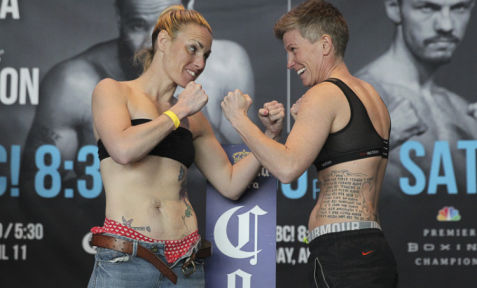
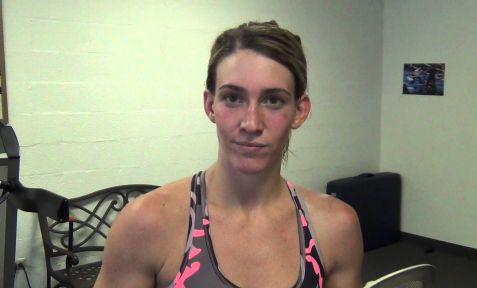
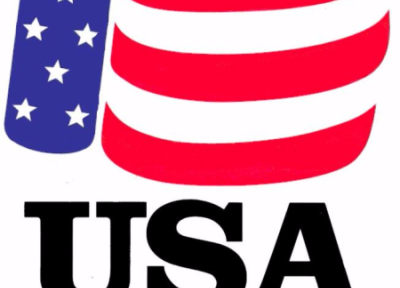
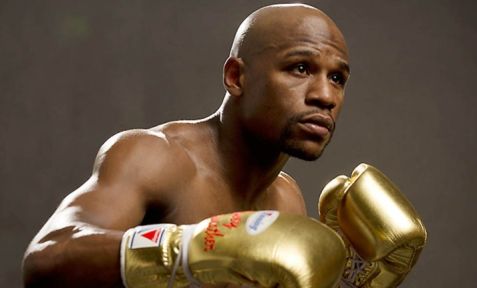

i love you